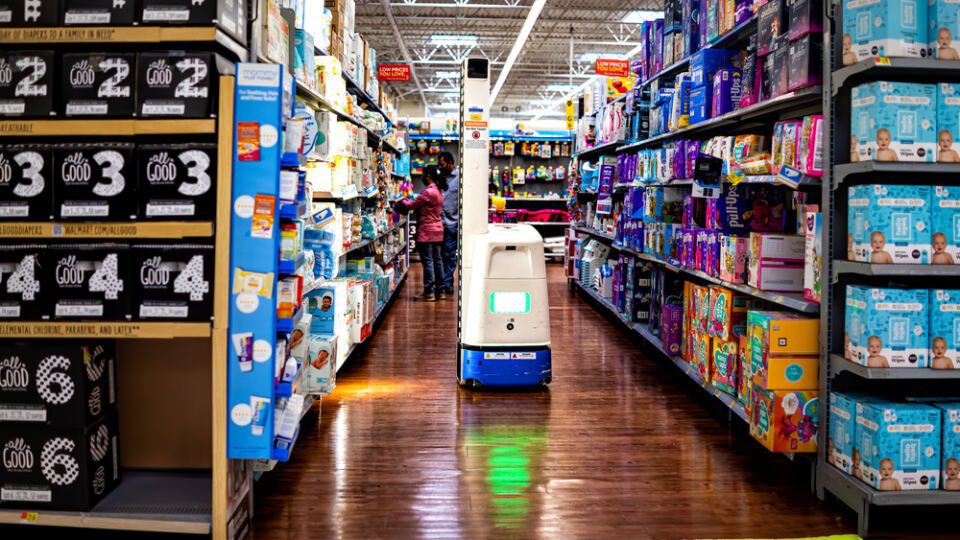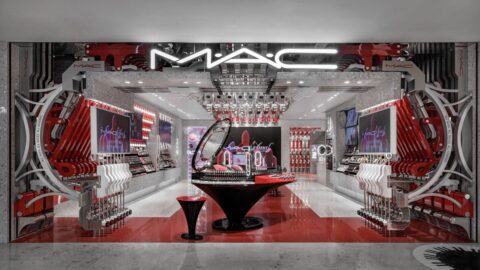Robots are already an established part of large-scale warehouses run by behemoths like Amazon. They move swiftly and at scale, covering a lot of ground in a stable, well-routed environment designed specifically for them. But slowly, robots are getting closer to the customer, and are helping retailers optimize operations in smaller warehouses and distribution centers, and even in stores to streamline fulfillment services.
When thoughtfully embedded into the retail experience, robots can be a sales, and loyalty, driver: 59% of shoppers who previously visited stores with automation said they would be willing to shift their in-store purchases from a retailer without automation technology to a store with automation technologies, according to a survey by Capgemini.
The key to a successful robotics rollout is making sure these devices are more than just a cute gimmick. “Does it find the product that I want quickly?” said Suzanne Larabie, VP, Portfolio Leader – Consumer Products Retail Distribution, West Coast Region at Capgemini in an interview with Retail TouchPoints. “Is it done in a user-friendly way? Is the experience that I’m getting with that interaction good? We need to go beyond the novelty of ‘Oh, this is pretty cool, look at what’s going on in here’ and think more about how it actually helps the customer. If it helps, then you will see continued interest in that store, but if it hinders, you will see the opposite effect.”
As retailers consider the role of robots in their brand experience, they must consider where they could provide the most value: on the store floor, on the last mile or to complete picking tasks. They also must be mindful of the fact that each use case is at its own area of development, and each requires retailers to think about how robots can best be applied to maximize the value of the investment.
In-Store Robots Free Humans for More Critical Tasks
Robots and automation have the power to improve in-store experiences — even when they‘re not directly interacting with customers. Many of the invisible tasks necessary to running a successful store, from keeping floors clean to ensuring shelves stay full, are ripe for disruption by robotic assistants. This is an especially valuable use case as retailers struggle to fill vacant roles and navigate mounting uncertainties in the labor market.
Advertisement
“Robots are really good at handling the repetitive things that no one wants to do or don’t have time to do,” said Chris Walton, CEO of Omni Talk and Third Haus in an interview with Retail TouchPoints. He noted that this frees up associates to handle tasks that require a “soft” touch, like stocking shelves and handling customer service.
However, even these tasks can benefit from technology. Some companies are already experimenting with robots that can handle the grunt work of restocking by bringing items from back rooms to the correct aisle. Even if a robot doesn’t have the necessary dexterity to make an attractive display, automating the grunt work of lugging products into position for shelving is a massive boon for retailers and associates alike.
“I wouldn’t say it’s ready for primetime yet, but that is a very manual and time-consuming activity,” said Ken Fenyo, President, Research & Advisory at Coresight Research in an interview with Retail TouchPoints. “Imagine if at two or three in the morning, a robot can roll out and restock the shelves. That would save a lot of labor. It can either remain saved or you can have people take on other tasks that have more value to the customer experience.”
Robots also could help retailers automate customer service. For example, Larabie noted that while self-serve kiosks can help shoppers easily access product information, properly implemented robots can bring the convenience to the next level by actually guiding shoppers rather than just telling them where to look. If an associate is busy with another task, a dedicated machine can always be on hand to help and possibly save a sale.
How You Deploy Robots Can Be Different as Night and Day
The biggest challenges around in-store robots are safety and convenience — how do you keep them out of customers’ paths to prevent accidents and keep from being a frustrating obstacle? One possible answer is to only deploy robots after hours, which is especially valuable for the the aforementioned stocking assistance. But retailers that only choose this route are missing out on other benefits that can improve long-term ROI.
“I think deploying robots at night leads retailers to really miss out on everything that that robots could give them during the course of the day,” said Walton. “For example, inventory. Checking your inventory at night, while helpful, isn’t as good as having a snapshot capture of it three or four times a day. That is what helps you get the products onto the shelves and into the customers’ carts. If you’re only doing that at night, you’re missing the big opportunity. Same with pricing: if your pricing isn’t accurate on the shelf and you’re only learning about that at night, it’s a missed opportunity.”
Even if robots become a key part of live operations, the “human element” of the store experience should never be replaced. According to Capgemini, 34% of retailers are worried about losing customer trust when they replace humans with machines and 39% offer strong messaging that a human being will always be on hand to support shoppers.
Where robots work particularly well as part of a larger technological ecosystem. Larabie noted that robots are well-suited for scanning shelves for stock levels and floors for messes, while other sensors can be used for tasks like people counting. Piping all this information into a centralized locations can improve all the tech storewide and help reduce problems like out-of-stocks while ensuring labor is being pointed to the most pressing needs.
With this in mind, not every store needs robots right now. Implementation can be a gradual process, and each retailer needs to figure out their specific needs and start with the tech that will best suit their current challenges.
“I think some people will go the robot route and other people will invest more in cameras that can handle a range of functions,” said Coresight’s Fenyo. “It might just be a question of your priorities and how quickly you want to get something to market.”
Robots Are Well-Suited for Picking — If You Earn Employee Buy-in
The easiest (if least futuristic) implementation for robots is to help with picking in the backroom of a store or at a microfulfillment center. Retrofitting a smaller, local space to utilize robot labor isn’t the same as using a purpose-built facility, but the shopper is still mostly out of the equation and robots are well-suited for picking tasks.
“Robotics is really about the promise of doing things profitably, because you can then automate the tasks of somebody going into the store, picking goods, packing them up and then either leaving them for pickup or delivering them,” said Fenyo. “All those are manual processes that take time and money to do, and that’s where I think robotics really can play a role in streamlining those processes and making them more economical.”
Still, putting robots in a microfulfillment center isn’t without its own challenges. Robots in large, specially designed warehouses have plenty of space to move safely and swiftly, while a smaller retrofitted center requires more agility. Walton noted that robots need to be designed with these unique needs and spatial constraints in mind for retailers to maximize the efficiency and value of the tech.
Properly implemented robots also can help staff be more productive, but they have to truly understand and buy into the technology first. To get associates on board with new workflows and processes, retailers will need to invest in education and retraining to help them make the most of robots’ potential.
“For example, if there are bins that are going to filled for online orders, get the robot to go and do that,” said Capgemini’s Larabie. “It helps the employee because they’ve automatically got the right size bin — and the robot can quickly assess the size of the order based on the basket size. I think marketing is an important thing internally as much as externally. Your employees also are your customers, and marketing to customers is helpful to you. Show what you are doing to enable the shopping experience.”
Robotics Goes Next-Level with the Last Mile The last mile is an area where robotics is still in its infancy. Sidewalks and streets pose a far more intimidating navigation problem, and government regulations have yet to catch up with the possibilities. Retailers are experimenting in this area, but there is still much work to do — and the benefits aren’t as massive as in-store automation from the customer’s point of view.
“It doesn’t remove friction from the process,” said Fenyo. “If the robot drives up to your door, you still have to go out and get your groceries. It’s not quite at the point where it comes to your door, particularly if we think about somebody who’s in an apartment complex — that’s a little more challenging than finding a residential neighborhood. I think there’s a lot of potential in that area, and there’s certainly a lot of companies experimenting with a whole range of technologies, but I believe it’ll be several years until we really start seeing that more widescale.”
Still, robots are perfectly suited for curbside and locker-based fulfillment. Store-adjacent sidewalks and parking lots have much slower, better controlled traffic than public streets on top of a much smaller scale to monitor. Omni Talk’s Walton noted that robots with temperature-controlled spaces could easily serve as mobile lockers that are filled when a customer checks in remotely, and can travel to a designated pickup zone to be emptied then return to the loading area afterwards.
Overall, the post-COVID environment is well-suited for robotic fulfillment both in-store and at home. Shoppers want to minimize contact, and autonomous machines can deliver convenience while also minimizing exposure to other humans. Add in the ongoing labor shortage, and robotics becomes an area that will be evolving and expanding rapidly.
“It’s an exciting space,” said Fenyo. “If you look at any of these things— microfulfillment, last mile delivery, robots in the store — I think it’s amazing just how many startups have appeared and how much VC money has been invested in the space. It’s definitely a big change from three to five years ago.”














